Are you looking for bell-shaped blooms to brighten up your flower garden? If so, you will learn about a wide range of bell-shaped flowers you may grow in this article. However, before we get started, let’s quickly go over a few reasons why you would wish to cultivate lovely flowers with a bell form.
They are classy. Both the curled stems from which certain bell-shaped blooms drop and the straightforward form of a bell are visually pleasing. Contrasting to other flowers, they offer a variety of textures and forms. To make your garden beds more interesting, mix them up with various kinds of flowers. They are available in a variety of hues. Given the range of hues, there is something to complement every area of your landscape.
#1. Bluebells
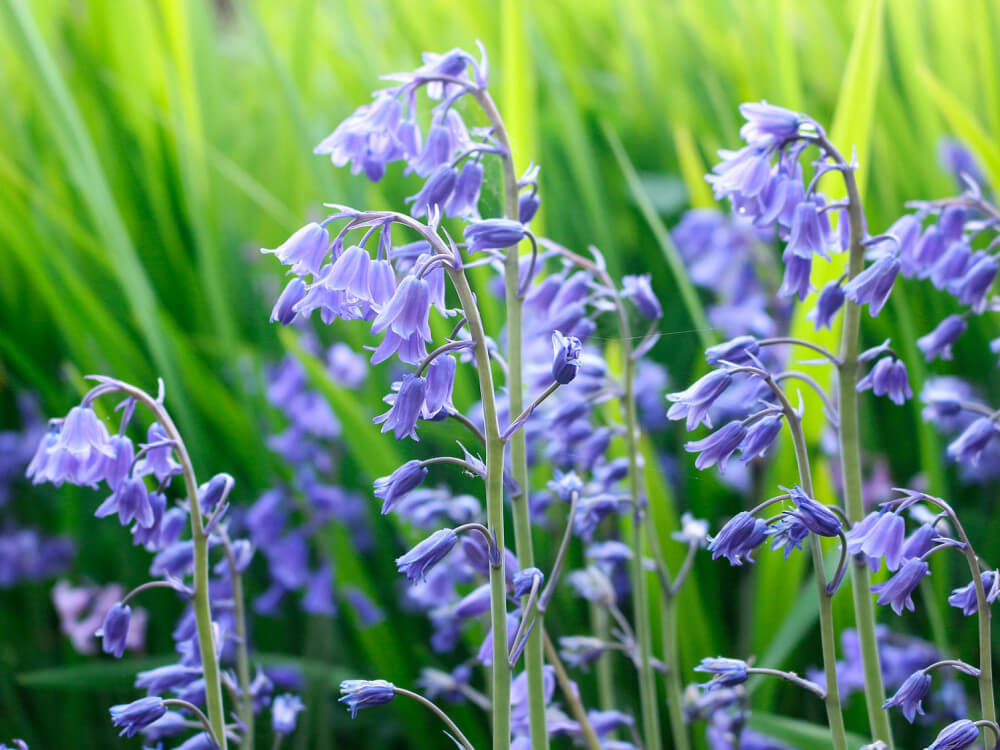 Source: Love The Garden
Source: Love The Garden
The perennial “bluebells” are known by their scientific name, Hyacinthoides non-scripta. These blooms are also known by the names “common bluebells”, “English bluebells”, and “wood hyacinths.” Bluebells have lovely bell-shaped purple blooms that fall down from an arcing stalk. They can grow up to around 10 inches tall.
#2. Coral Bells
 Source: Plantcetera
Source: Plantcetera
The plant species known as coral bells, or “alumroot,” belongs to the genus Heuchera. The genus has about 37 species, along with a variety of gorgeous cultivars you might want to consider for your garden.
These perennials produce blooms in a variety of hues, including white, amber, and purple. In late spring or early summer, panicles of tiny blossoms develop from the plants on hardy, wiry stalks. The blooms make wonderful bouquet fillers when clipped.
#3. Lily Of The Valley
 Source: Houseplant Central
Source: Houseplant Central
Another traditional bell-shaped flower to consider including in your garden is the lily of the valley. Convallaria majalis is its scientific name. Although “lily of the valley” is the name by which it is most frequently known, you may also come across the terms “Mary bells”, “Mary’s tears” or “Our Lady’s tears.” Glovewort and Apollinaris are two names that are now mostly extinct.
#4. Virginia Bluebells
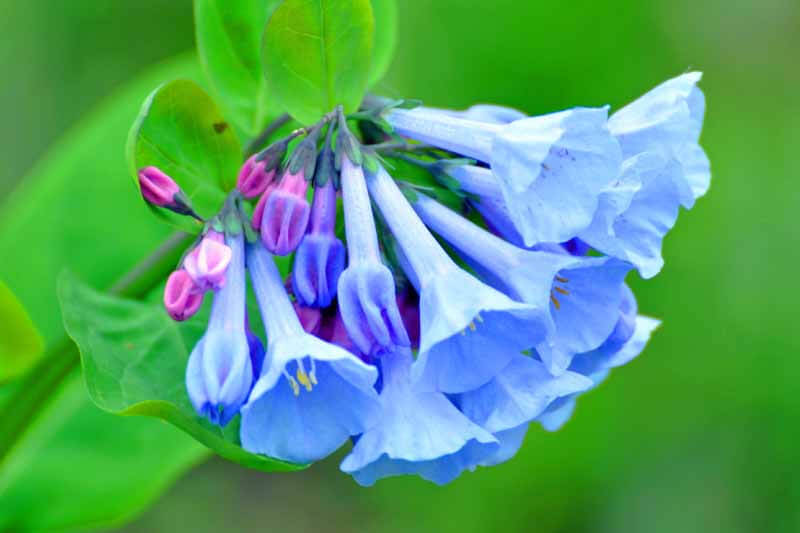 Source: Gardener’s Path
Source: Gardener’s Path
The Virginia bluebell has a similar appearance to ordinary bluebells and can be more appealing to you if you like those flowers. Despite the name and look being similar, this plant is unrelated. Mertensia virginica is its scientific name. Virginia bluebells are also known as lungwort oyster leaf, Roanoke bells, and Virginia cowslip.
The plant has gray-green leaves and may grow up to 24 inches tall. The buds are pink when they first develop. However, when the blossoms swell, they become purple (typically; rarely, you might get them in white or pink).
#5. Foxgloves
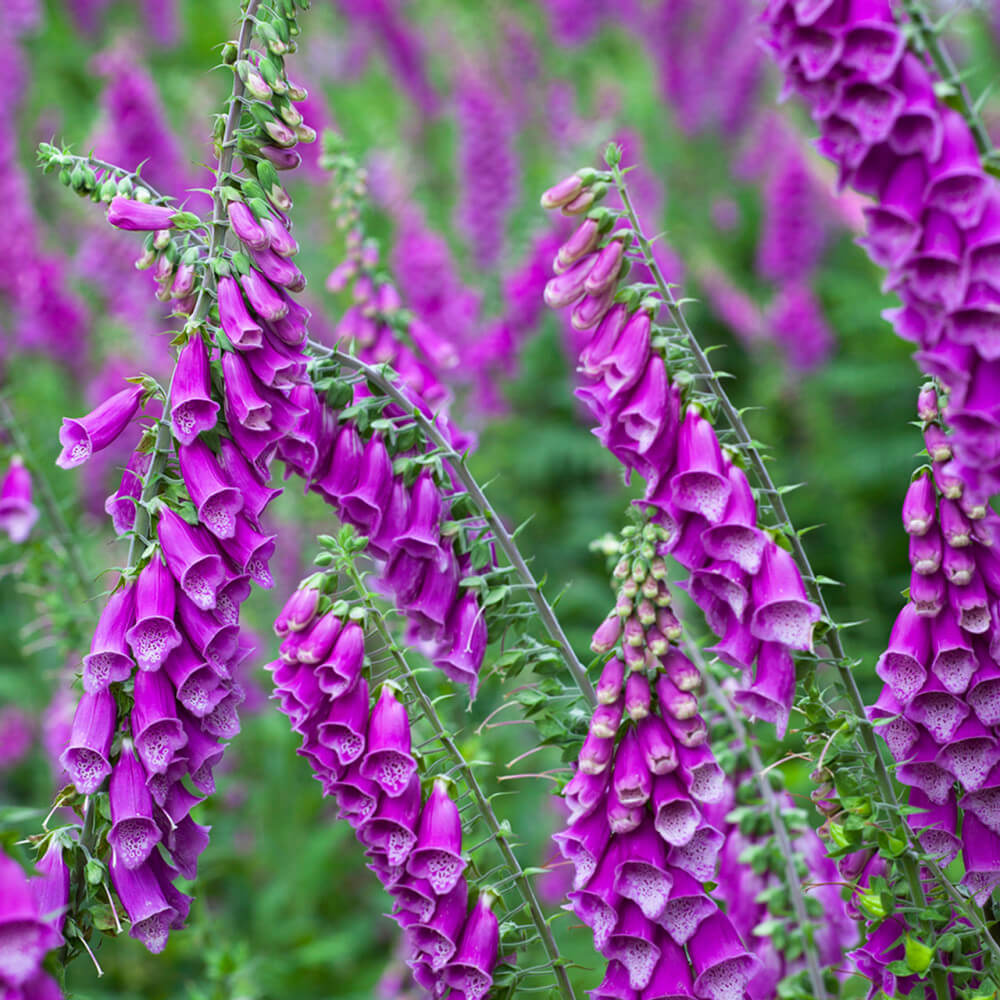 Source: Sarah Raven
Source: Sarah Raven
The Digitalis genus contains about 20 species of these perennial and biennial plants. The tall spike that each foxglove plant produces is covered in a profusion of tube-shaped flowers. Most foxgloves are purplish or pinkish, but there are some white and yellow varieties. Foxglove has medicinal uses, but it is also extremely poisonous and can be deadly.
#6. Guinea Hen Flowers
 Source: Breck’s
Source: Breck’s
Guinea Hen Flowers, with the scientific name Fritillaria meleagris, is related to Persian Lilies. In addition to these, the flower is also known as “chess flower,” “leper lily,” “chequered lily,” “frog cup,” and “snake’s head fritillary.”
On the tips of delicate, tall, arching stems rising above the leaves, guinea hen blooms emerge in the middle of April, either singly or in pairs. The nodding blooms have six pointed tepals and are about 2″ long. In colors of maroon, dark purple, reddish-purple, and/or muddy pink, each square-shouldered bell has a distinctive but varying checkered or mosaic pattern.
#7. Angel’s Trumpet
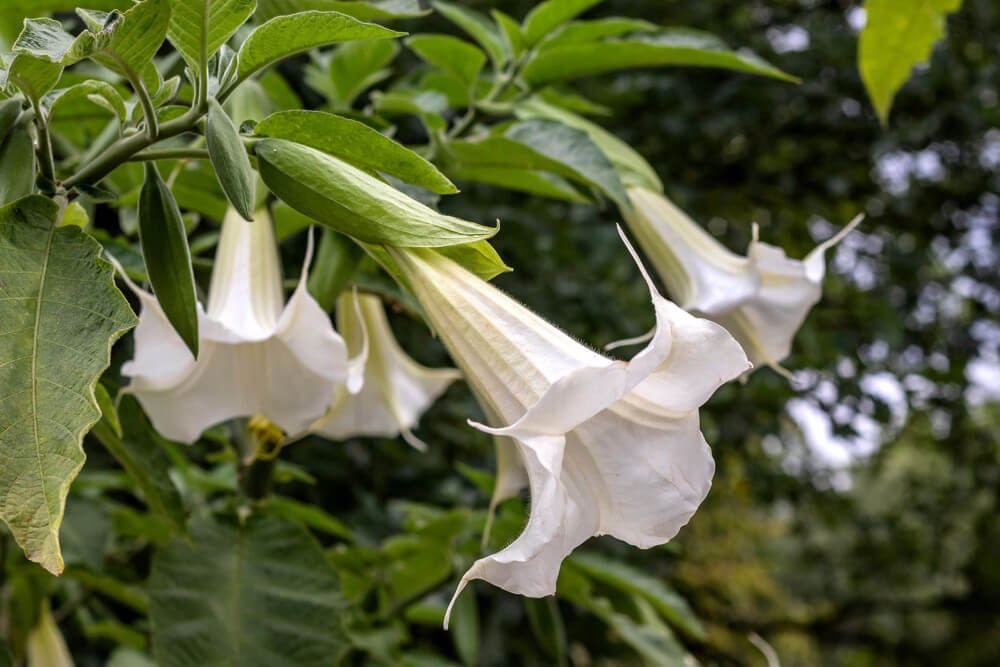 Source: Better Homes & Gardens
Source: Better Homes & Gardens
Do you live in a warm, tropical region? If so, you might want to consider trying to cultivate angel trumpets. These flowers grow on shrubs or trees, in contrast to the majority of the flowers on this list. There are a total of seven species that belong to the Brugmansia genus.
The enormous, trumpet-shaped blossoms may grow up to 24″ long and come in a range of stunning hues. This plant may grow to be anywhere between 15 and 20 feet broad and 30 feet tall, so you’ll need enough room for it.
#8. Canterbury Bells
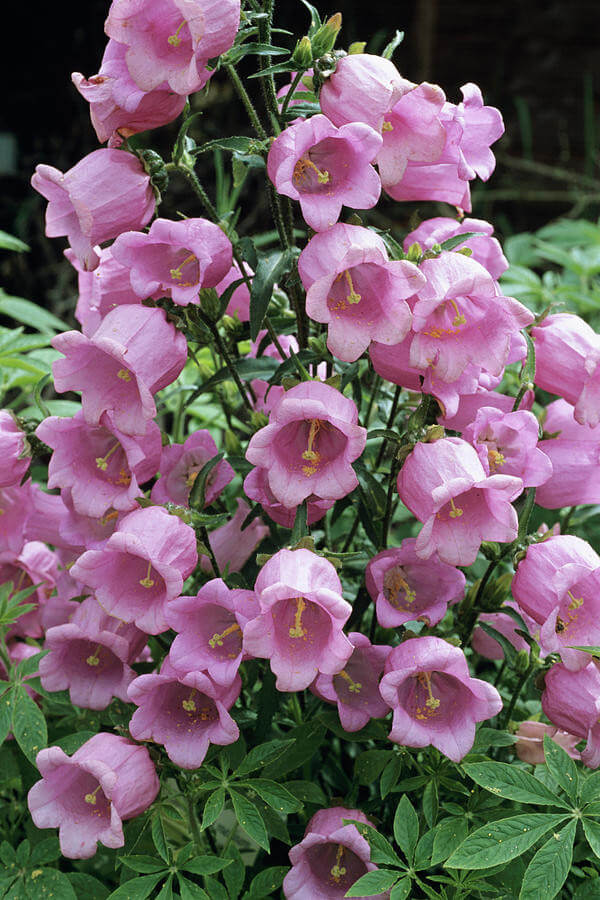 Source: Fine Art America
Source: Fine Art America
The Korean bellflower, Campanula takesimana, is another plant with bell-shaped blossoms that might look great in your yard. Despite belonging to the same Campanula genus as Canterbury bells, they seem remarkably different from one another. While Korean bellflowers hang downward, Canterbury bells frequently face outward or even upward. In addition, they are longer and thinner. They are most frequently found in pink and white tones.
#9. Persian Lilies
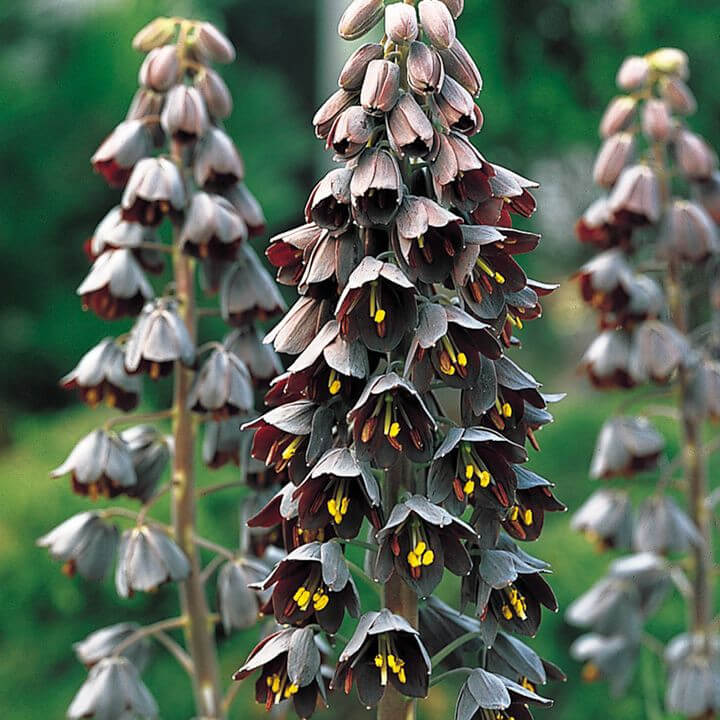 Source: The Garden of Eaden
Source: The Garden of Eaden
Another bell-shaped flower with the scientific name Fritillaria persica that you might enjoy cultivating if you like foxgloves is the Persian lily. The mature stalks may grow up to 3 to 4 feet tall and contain up to 30 blooms. The bell-shaped blossoms hang softly to the ground. Green, ivory, dark crimson, and dark purple are all possible blossom hues. They grow well in full sun and are resistant to deer and rabbits, just like foxgloves.
#10. Snowdrops
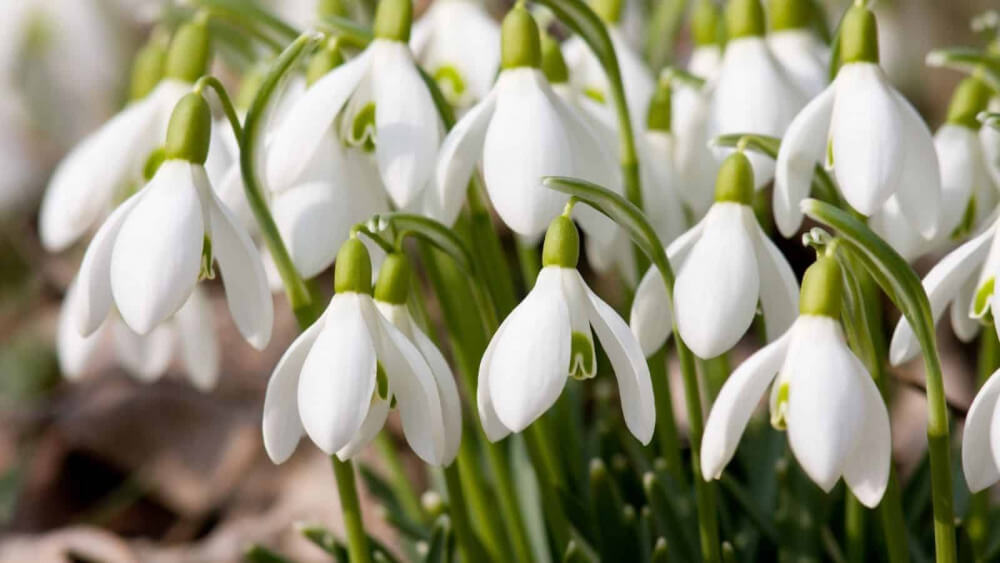 Source: Home For The Harvest
Source: Home For The Harvest
Galanthus is a genus of flower that includes snowdrops. In total, there are around 20 of them. The name of the plant is derived from its peculiar bloom time, which is often during the winter months (although they can also bloom in the fall or spring). The name also alludes to how it appears, with its tiny, bell-shaped, white blossoms that dangle like snowflakes.
#11. Bells Of Ireland
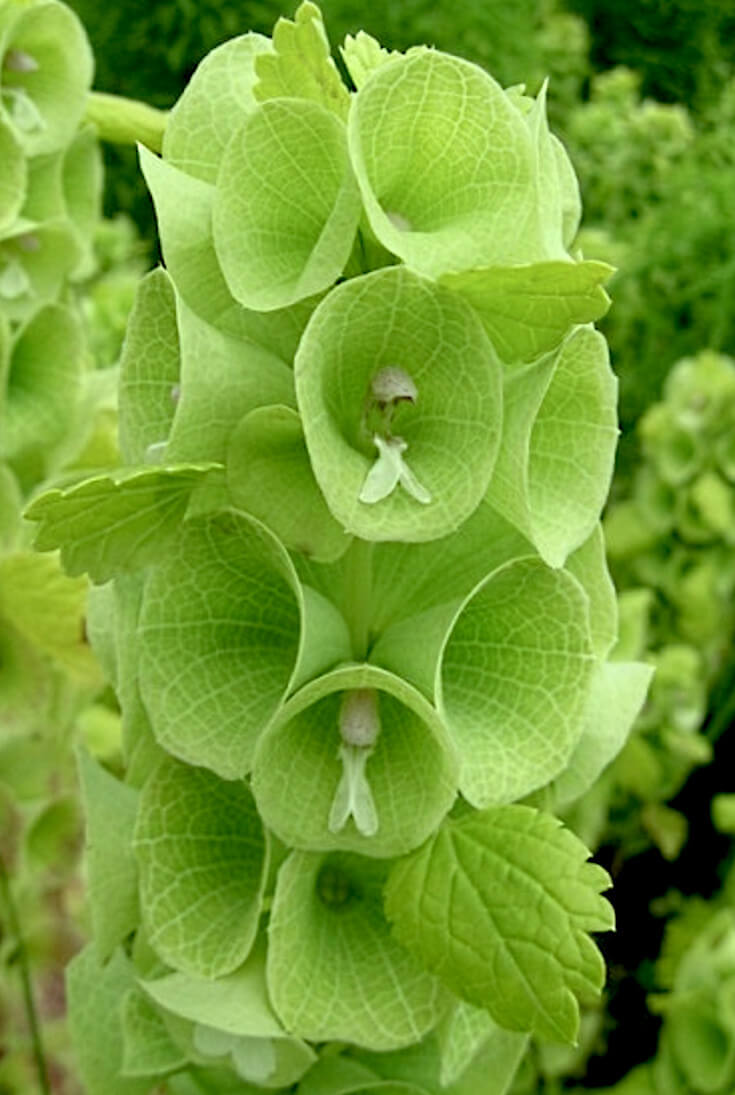 Source: Daylilies in Australia
Source: Daylilies in Australia
For those who enjoy foxgloves, Moluccella laevis, often known as bells of Ireland, is an additional choice.
They belong to the mint family and go by the name “shellflowers”, which is also occasionally spelled.
While you may naturally believe that this plant is indigenous to Ireland, it really comes from western Asia, which is a completely another region of the planet. This plant produces long stalks covered with bell-shaped blooms, much like foxgloves. They may grow taller than three feet.
#12. Grape Hyacinths
 Source: Thompson & Morgan
Source: Thompson & Morgan
The grape hyacinth is a popular selection among many gardeners for bell-shaped blooms. Despite its name, this plant is not officially a genuine hyacinth variety or even a member of that family (although it was once considered one).
They can develop into beings that are 6 to 9 inches tall in appearance.Each time has a thick head of tightly packed purple bell-shaped blooms on top. The plant gets its name from how each rounded flower resembles a grape. There are numerous hues of grape hyacinths than the bluish-purple, which is the most common.
